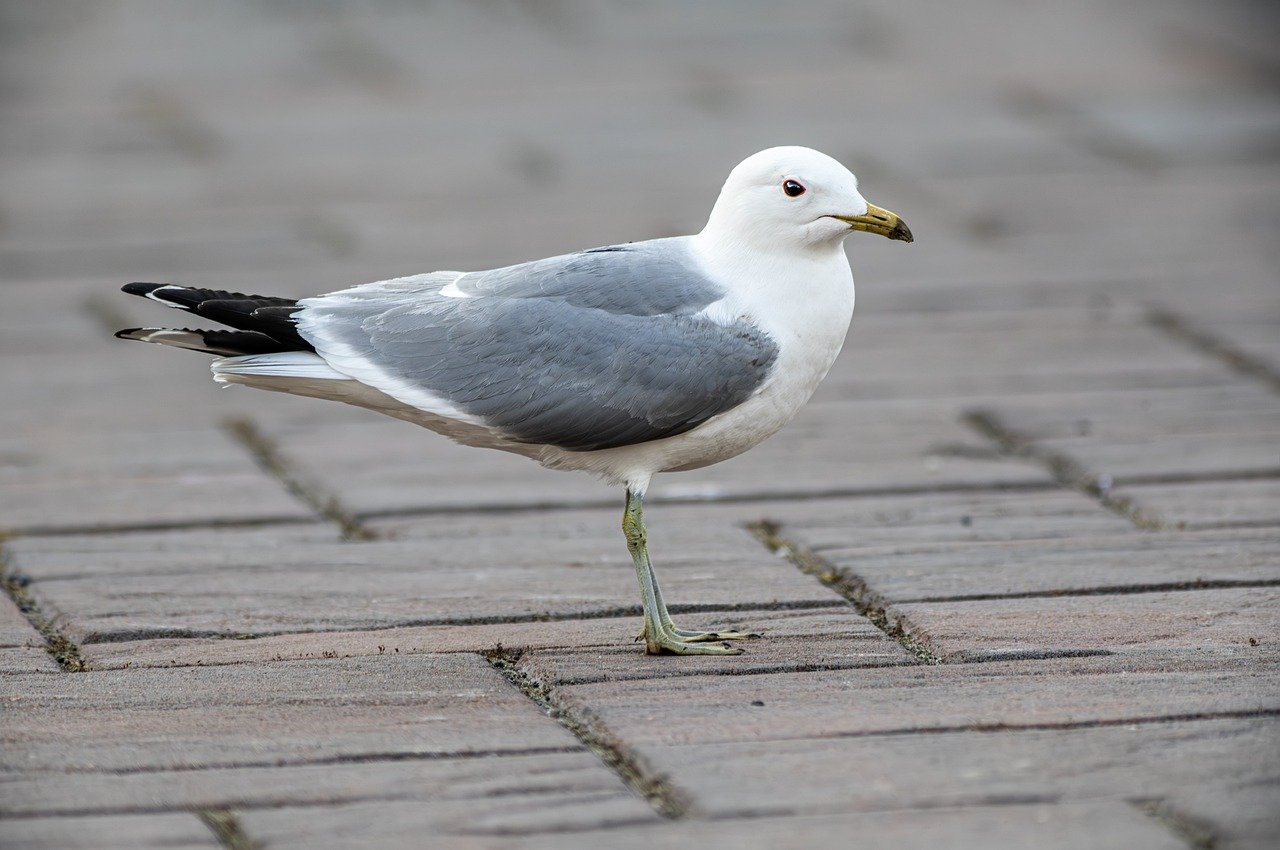The Common Gull (Larus canus), also known as the Mew Gull in North America, is a medium-sized species of gull found across Europe, Asia, and North America. Here are some key features and characteristics of the Common Gull:
- Appearance:
- Size: The Common Gull is medium-sized, measuring about 40 to 46 centimeters (16 to 18 inches) in length, with a wingspan of 105 to 125 centimeters (41 to 49 inches).
- Plumage: Adults have a white head, neck, and underparts, with a light gray back and upper wings. The wingtips are black with white spots, known as “mirrors.” The legs are yellow-green, and the bill is yellow with a slight greenish tinge, sometimes showing a faint black ring during the non-breeding season.
- Juveniles: Juvenile Common Gulls are mottled brown and gray, with a dark bill and dark legs. They go through several plumage stages before reaching adult plumage in their third year.
- Habitat: Common Gulls inhabit a variety of environments, including coastal areas, wetlands, inland lakes, rivers, agricultural fields, and urban areas. They are often seen in both freshwater and marine environments.
- Distribution:
- Europe and Asia: Common Gulls are widely distributed across northern and central Europe and parts of Asia. They breed in these regions and migrate southwards during the winter.
- North America: Known as the Mew Gull, they are found along the Pacific coast and interior regions of North America. The North American population is considered a separate subspecies (Larus canus brachyrhynchus).
- Diet: Common Gulls have an omnivorous diet, feeding on a wide variety of food items. They consume fish, insects, earthworms, small mammals, birds, and a variety of plant materials. They are also known to scavenge for food in urban areas, feeding on human refuse.
- Breeding:
- Nesting Sites: Common Gulls typically nest in colonies on coastal cliffs, islands, or inland near lakes and rivers. They build nests on the ground, often in grassy or marshy areas.
- Reproduction: The female lays 2 to 4 eggs, which are incubated by both parents for about 23 to 26 days. The chicks are semi-precocial, meaning they are relatively mature and mobile shortly after hatching, but they still depend on their parents for feeding and protection.
- Behavior:
- Flight: Common Gulls are strong and agile fliers. They are often seen soaring and gliding over water bodies and open landscapes.
- Social Behavior: Outside of the breeding season, Common Gulls are often seen in flocks, sometimes mingling with other gull species. They are generally less aggressive than larger gulls.
- Conservation: The Common Gull is not currently considered threatened and has a stable population. However, local populations may face pressures from habitat loss, pollution, and changes in food availability. Conservation efforts are focused on monitoring populations and protecting important breeding and feeding habitats.
Overall, the Common Gull is a versatile and adaptable bird species, thriving in a wide range of habitats and playing an important role in both natural and urban ecosystems. Its distinctive appearance and behavior make it a familiar and well-recognized species in many parts of the world.
Visited 920 times, 5 visit(s) today
Views: 1149
Subscribe to the newsletter:
